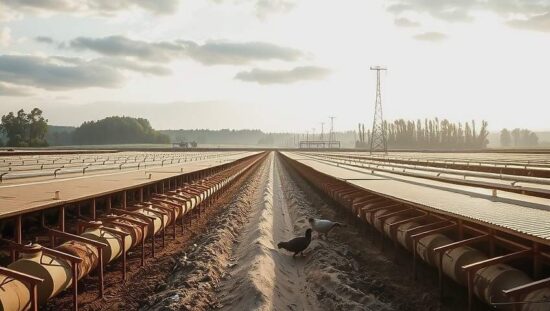Data released this week by the German Federal Statistical Office (Destatis) paints a complex picture of the nation’s poultry industry, highlighting both robust domestic production and emerging vulnerabilities related to animal disease and import dependency. As of August 2025, 2,200 farms across Germany housed an average of 44.6 million laying hens, producing approximately 1.2 billion eggs intended for consumption.
The dominance of intensive farming practices remains stark, with floor housing accounting for the largest proportion of laying hens (25.5 million), followed by free-range (11.3 million), organic (6.6 million) and small group housing (1.2 million). Regional disparities are significant; Lower Saxony leads with 17.3 million hens, followed by North Rhine-Westphalia (4.7 million) and Bavaria (4.0 million). This geographical concentration amplifies the risk of widespread outbreaks.
The specter of avian influenza continues to necessitate stringent measures, with mandatory housing requirements or their consideration in several regions. Previous outbreaks have resulted in the culling of hundreds of thousands of birds to prevent further spread, raising concerns over economic losses for farmers and potential disruption to supply chains. Meat from affected farms is barred from sale, further impacting market stability.
While Germany demonstrates a high degree of self-sufficiency in poultry meat production – reaching 100% overall in 2024 – the distribution is uneven. Chicken meat production surpasses demand, with a self-sufficiency rate of 105%, illustrating potential overproduction. However, weaker self-sufficiency rates are evident in turkey, duck and goose meat, highlighting areas of reliance on imports. Per capita consumption of poultry meat has steadily increased year-on-year, reaching 13.6 kilograms in 2024.
A contrasting situation unfolds regarding egg production. Despite a record-breaking per capita consumption of 249 eggs in 2024, Germany’s self-sufficiency rate lags at just 72%, requiring substantial imports to meet domestic demand. This reliance on external sources presents a vulnerability that could be exacerbated by geopolitical instability or disruptions to global trade. The potential consequences of this dependency are increasingly becoming a point of debate amongst agricultural policymakers, particularly given the escalating costs associated with imported goods.
The data underscores a need for a critical reassessment of Germany’s poultry production model. While demonstrating impressive levels of domestic poultry meat production, the dependency on imported eggs and the concentration of vulnerable flocks raise crucial questions about the long-term sustainability and resilience of the German agricultural sector. Increased surveillance for avian influenza, diversification of egg supply chains and a re-evaluation of intensive farming practices are likely to feature prominently in upcoming policy discussions.





